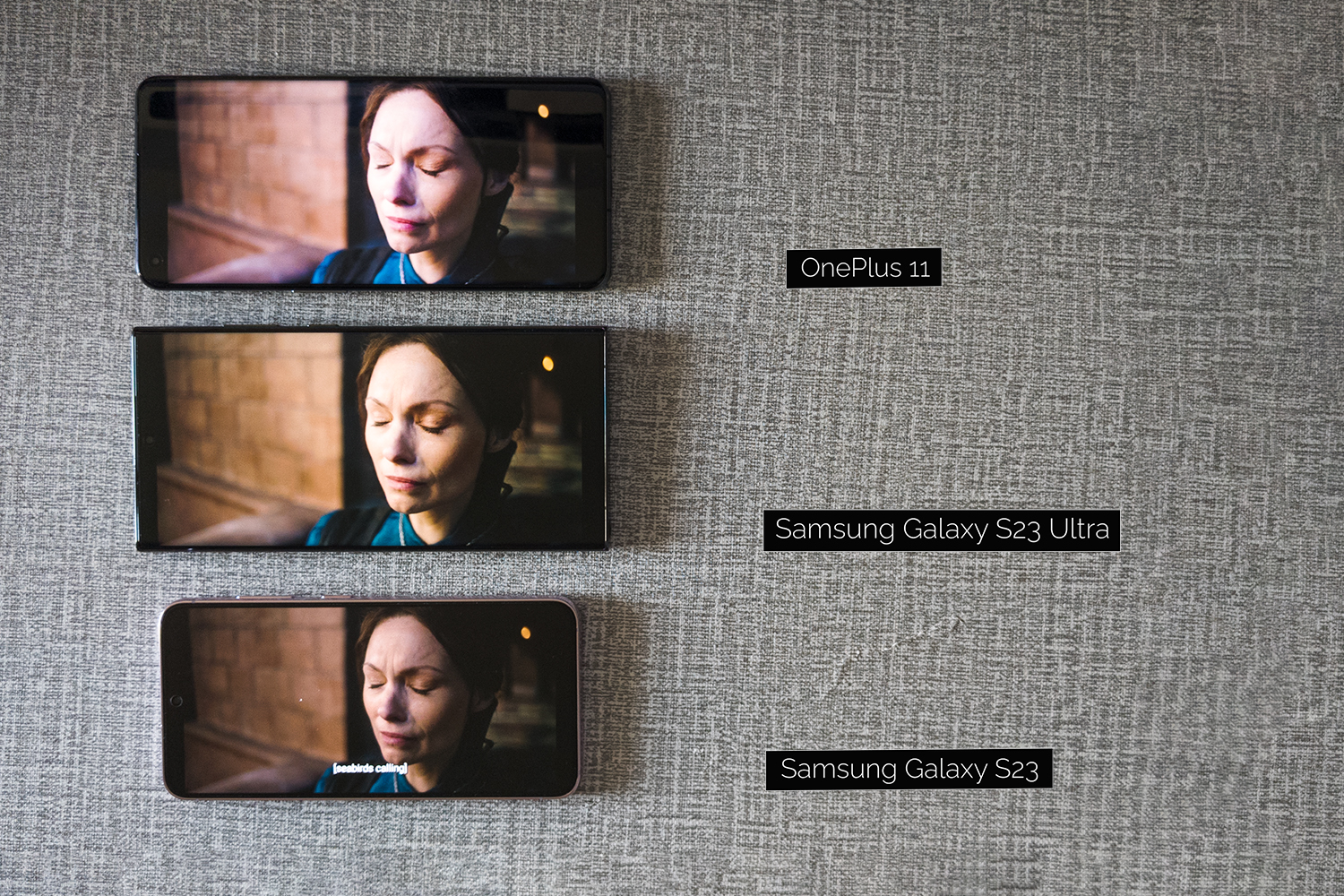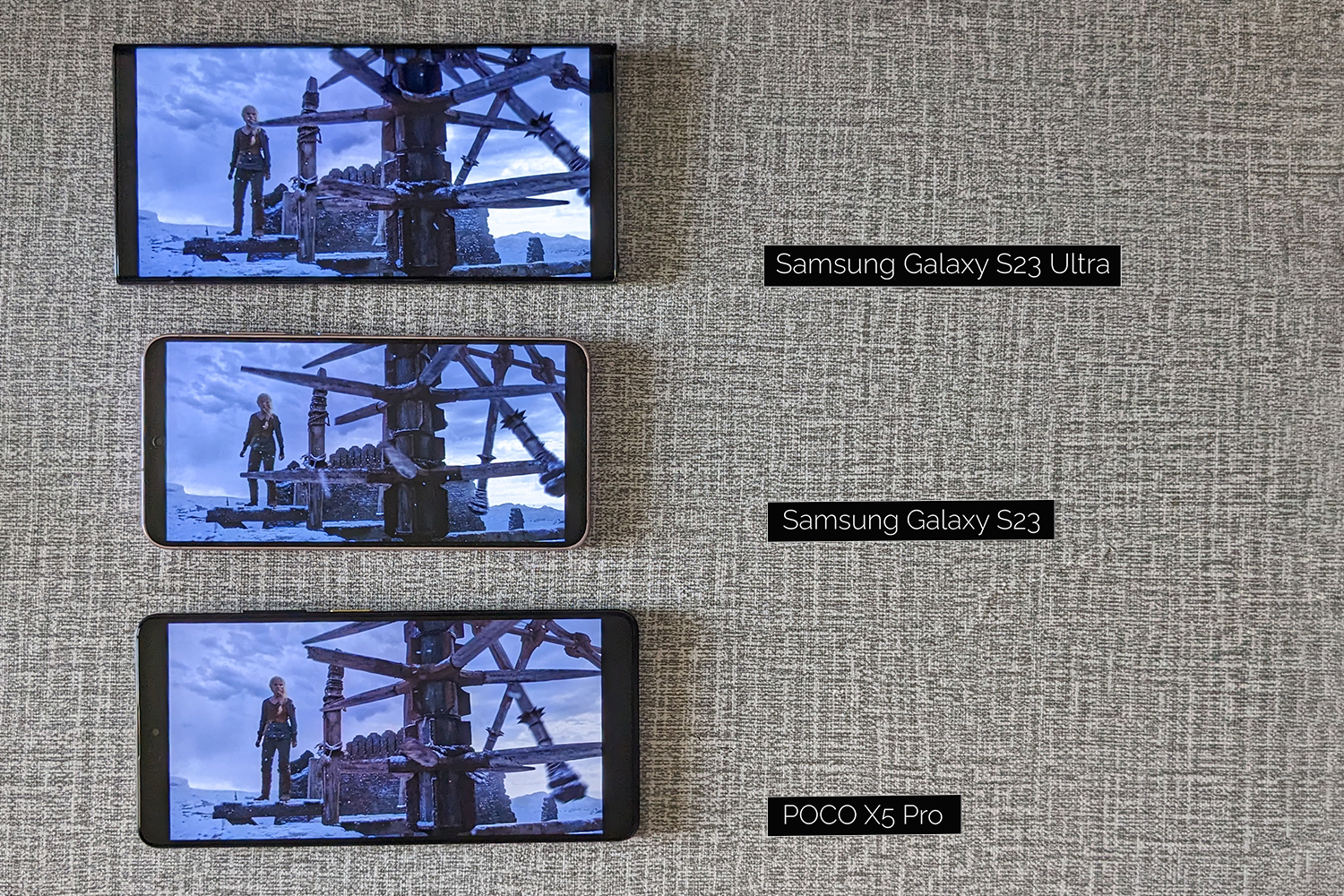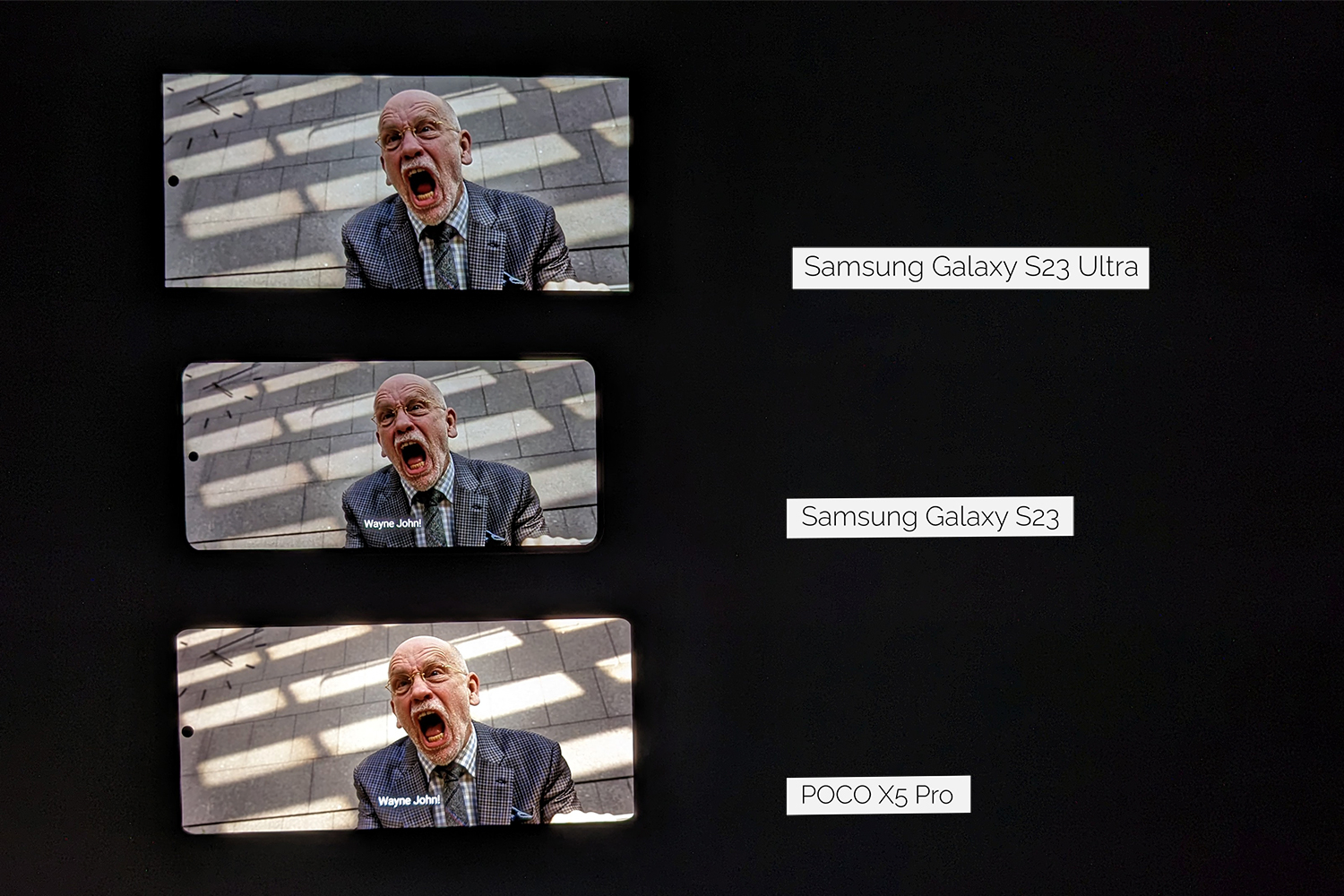The Samsung Galaxy S23 series has the best displays of any Samsung smartphone ever. These advanced displays get a fancy name — Dynamic AMOLED 2X — and a 120Hz dynamic refresh rate along with a super high brightness of 1,200 nits — the brightest on any Android phone. Samsung also promises a peak brightness of 1,750 nits, which comes to use while watching HDR content. Despite its proficiency, the Galaxy S23 series has one major limitation, which prevents it from using the screen hardware to its full potential.
Like many previous generations of Samsung flagships, the Galaxy S23 series lacks support for Dolby Vision, a pinnacle of technology when viewing HDR content. While it does support another HDR format, the lack of Dolby Vision makes it look more feeble than the competition and may discourage anyone who spends a significant time watching video content on their phones. It’s a big problem and one that needs to be fixed soon.
What is Dolby Vision, and why does it matter?
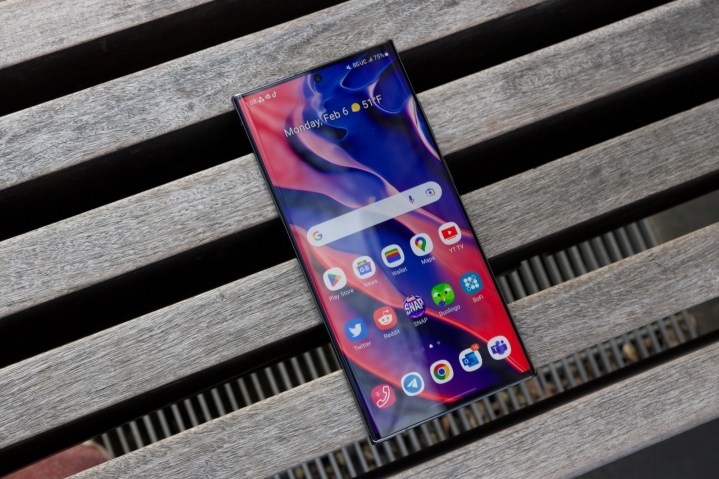
Dolby Vision is a leading HDR (High Dynamic Range) technology designed to enhance brightness and contrast, thus improving the visibility and clarity of the content. To enjoy Dolby Vision, the video content must be encoded using high-quality equipment and played on a vibrant display that can meet the standard’s basic requirements.
Compared to other HDR standards, such as HDR10, HDR10+, and HLG, Dolby Vision is technologically more advanced. Quality-wise, HDR10+ is the closest to Dolby Vision, and both are superior to the others because they use dynamic metadata — the scene’s brightness is adjusted dynamically for each frame in the video. In real-life viewing experience, HDR10+ and Dolby Vision significantly enhance videos with scenarios that are either extremely dark or extremely light.
Dolby Vision also takes the lead in terms of the range of colors supported. It supports a 12-bit color depth of 68.7 billion colors, while HDR10+ is limited to a 10-bit color depth of 1.07 billion. And then, there are other technical aspects, such as color gamut and how the colors are calibrated for different refresh rates.

For an average user, these metrics may seem overrated, especially since it takes really sharp (read: Superman-level sharp) eyes and a really high-quality display panel to differentiate between the 10-bit and 12-bit colors, but the latter results in a more gradual transition of colors (because of more than 60 times the shades of the same color).
In reality, the Galaxy S23 Ultra‘s AMOLED display supports only 16 million colors (far less than what HDR10+ or Dolby Vision offer). But that is acceptable, considering it is designed to fit in your hand two hands, and that quashes any comparison between HDR10+ and Dolby Vision based on the color reproduction.
What actually makes Dolby Vision still desirable over HDR10+ is the broader availability of content across physical formats such as Blu-Ray disks as well as online platforms such as Netflix, Amazon Prime Video, Disney+, and Apple TV+. This is complemented by Dolby Vision’s broader availability in the TV market. Dolby Vision is also the most widely supported HDR standard among flagship smartphones and tablets — including the iPhone, recent iPad Pro models, and high-end models from OnePlus, Xiaomi, Oppo, Vivo, Motorola, Huawei, and Honor.
The HDR10+ standard, in comparison, is limited to Amazon Prime Video and YouTube, while Roku and Apple TV+ joined the list only last year. Furthermore, only Samsung and Google have consciously limited themselves to HDR10+.
Why Samsung doesn’t use the feature
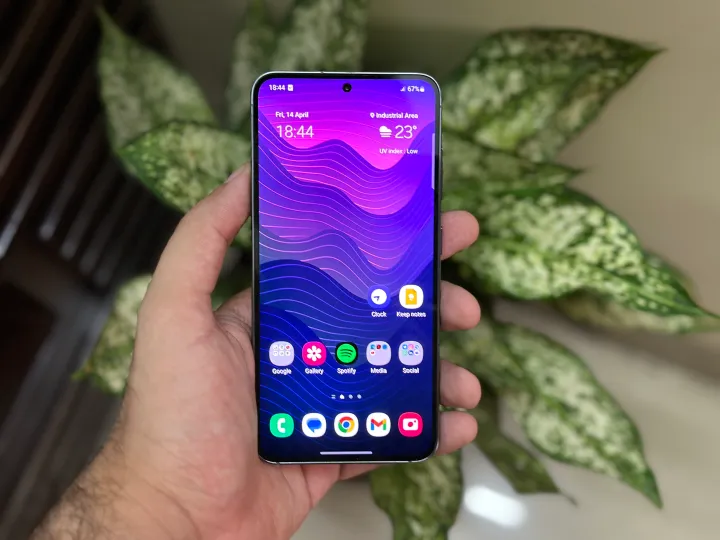
Samsung has fervently contended HDR10+ is excellent for viewing content. One of the potential reasons Samsung backs away from Dolby Vision is that it requires additional licensing from Dolby Laboratories and may add to the cost. These costs, however, cannot imaginably be too high for Samsung to ignore in favor of a less widely supported HDR standard. In fact, the last known cost of royalty was not more than $3 per device.
A more plausible reason behind Samsung’s choice of using HDR10+ is its involvement in creating the standard. HDR10+ was co-created by Samsung, 21st Century Fox Studios, and Panasonic.
A third reason for Samsung’s reluctance to pay Dolby for this certification may be its confidence in its display technology. Being a world leader in display technology, Samsung makes some of the brightest panels — both for TVs and smartphones — which may not need Dolby’s magical seasoning on top. We reached out to Samsung for comment about the S23’s lack of Dolby Vision and will share the company’s response here if/when we hear back.
Whether Samsung is really looking to promote its own HDR standard or avoid additional costs, there are some drastic real-life consequences in video viewing, especially on the Galaxy S23 series. I share some examples in the section below.
Here’s why no Dolby Vision is a problem
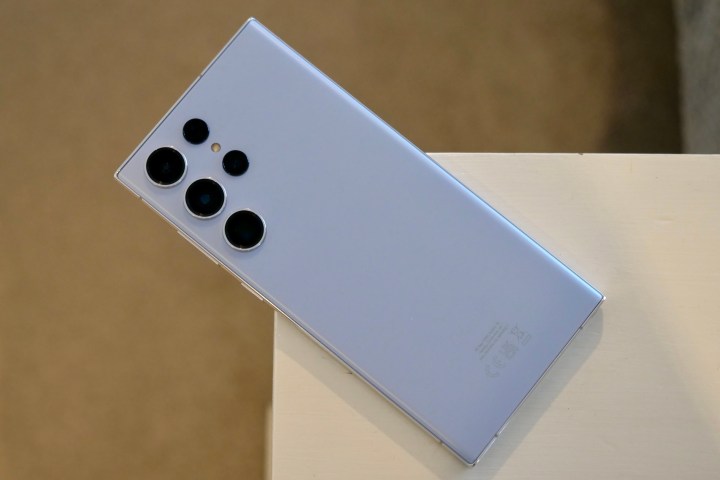
Unless you are watching content on one of the services that support HDR10+, the Samsung Galaxy S23 Ultra is at a significant disadvantage.
Let’s look at a set of comparisons, playing the same scenes from Netflix content that supports Dolby Vision on three different devices — the Galaxy S23 Ultra, the smaller Galaxy S23, and the OnePlus 11. All of these comparisons are made with the brightness cranked to full using the Netflix app’s internal brightness slider.
Scenario 1: bright scene, bright room
In our first set of comparisons, we look at the difference between the three devices playing a bright scene from the Witcher TV series in bright indoor conditions with natural lighting. The OnePlus 11 can be seen displaying the brightest content, while the Galaxy S23 Ultra and the Galaxy S23 are visibly less bright (you can’t call them dark, though!).
Samsung phones scale down to the inferior standard, HDR10, because they lack support for Dolby Vision, and Netflix lacks support for HDR10+. I prefer the natural color tones on Samsung phones because OnePlus’s colors appear artificially exaggerated.
Despite the OnePlus 11’s brighter display, visibility is not an issue on either of the three phones.
Scenario 2: dark scene, bright room
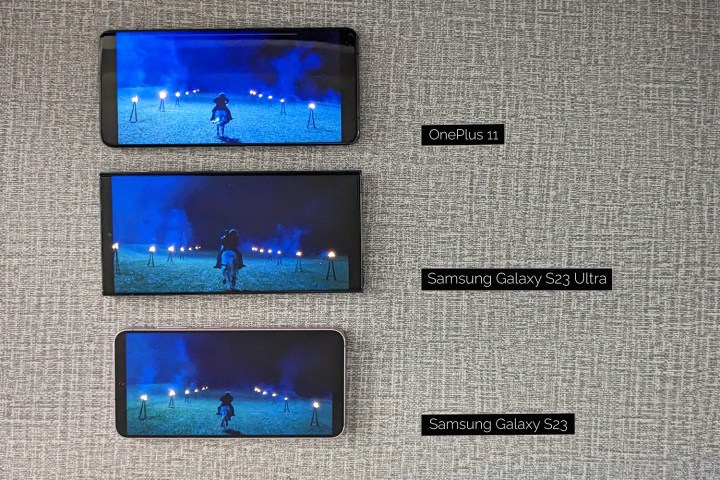
Visibility tends to take a significant hit when there’s a dark scene. Visuals from the Galaxy S23 and the Ultra appear much gloomier as dim parts tend to merge into black on these devices.
Meanwhile, the OnePlus 11 can maintain better details in the darker sections of the scene, making it much more enjoyable.
For obvious reasons, I prefer the OnePlus 11, and this especially applies to movies and TV series predominantly shot in dark settings.
Scenario 3: high-contrast scene, dark room

In our third comparison, we look at how the three phones perform in the case of a high-contrast scene of the moon, with a balance of bright and dark parts, when viewed in a dark room. These are some visuals from Space Force, another Netflix TV show that supports Dolby Vision.
Once again, the OnePlus 11 is notably brighter (in fact, it’s too bright), but that does not deter me from finding the Galaxy S23 and the Galaxy 23 Ultra acceptable. In fact, I prefer not to be blinded by the OnePlus 11’s luminance.
Scenario 4: Dark scene, dark room

This scenario is what inspired me to bring the Galaxy S23’s insufficiencies up with my editor, and the image above shows why. A really dark scene translates to poor visibility on the Galaxy S23 Ultra, even in a dark room. I chose a dark room to make this comparison because our eyes adapt to the ambient lighting and make darker scenes much more visible.
The Galaxy S23 series takes away key details from the Witcher scene, where everything except Henry Cavill’s face is poorly illuminated. As exemplified by the image above, Dolby Vision tends to be very useful in such scenarios.
This $450 phone handles HDR better than Galaxy S23 Ultra

Above, I spoke about how Samsung may be dissuaded from adding Dolby Vision support due to additional costs. Xiaomi’s spin-off brand Poco defies that by launching several mid-range Android smartphones with 120Hz AMOLED displays that support Dolby Vision.
For instance, the Poco X5 Pro is priced at less than $450 (just $300 in parts of Southeast Asia!) and has both Dolby Vision and HDR10+ support.
The Poco phone understandably uses a much inferior display, without all the fancy LTPO technology, and has a typical brightness of 500 nits — less than half of what Samsung offers on the Galaxy S23 series. Despite that, the results are grossly surprising.
I replicate the same scenarios from above and witness the Galaxy S23 series being blown out of the water. You can see for yourself above.
Is Dolby Vision the real culprit?

Dolby Vision does appear to be the one common denominator in all of the comparisons above, leading us to think it is the main culprit behind the Galaxy S23 series’ display problems. However, I stumbled upon an anomaly in which the Galaxy S23 Ultra’s display does get much brighter.
While taking pictures of the three devices, I noticed the Galaxy S23 and the Galaxy S23 Ultra shifting brightness — despite the brightness slider still being set to the maximum value. By firing the flash accidentally in one of the photos, I stumbled upon the Galaxy S23’s high-brightness mode, which jacked up the brightness magically, making the display much brighter than the OnePlus 11 or the Poco X5 Pro.

I confirmed these results by drawing another phone’s flash very close to the Galaxy S23 and Galaxy S23 Ultra. But as soon as the light source was removed, the displays reverted back to dullness almost instantly.
Upon further investigation, I found an explanation by XDA’s Dylan Raga, who attributes it to a software issue that limits brightness while watching HDR content on the Galaxy S23 and Galaxy S23 Ultra, unless these phones are under direct sunlight. The “Video Brightness” feature, which can be activated from Settings > Advanced features, further acts counterintuitively by limiting brightness when watching content intended to be viewed on a display that supports HDR10+ or Dolby Vision. Dylan also claims the Galaxy S23’s HDR performance is worse than the Galaxy S22 series.
Samsung’s protest is hurting you and me
Irrespective of the technical explanation behind its inability, real-life tests show how the Galaxy S23 series struggles to match up to other phones that cost much less. It does not even stand a competition against the iPhone 14 Pro, which features an even brighter display and support for Dolby Vision.
In fairness, I don’t blame Samsung for taking its stand instead of being bullied by an industry lobby to pay Dolby for the certification. Instead, it wants to popularize the free and open-source standard — HDR10+ — which does the same. But in practicality, the lack of support on popular apps such as Netflix and Disney+ hurts you and me more than Samsung.
As someone who has recommended the Galaxy S23 Ultra to countless people looking for the ultimate performance on an Android phone, I feel Samsung should take note of the issue and either actively pursue video providers to support HDR10+ … or simply pay for Dolby Vision until it achieves that.
